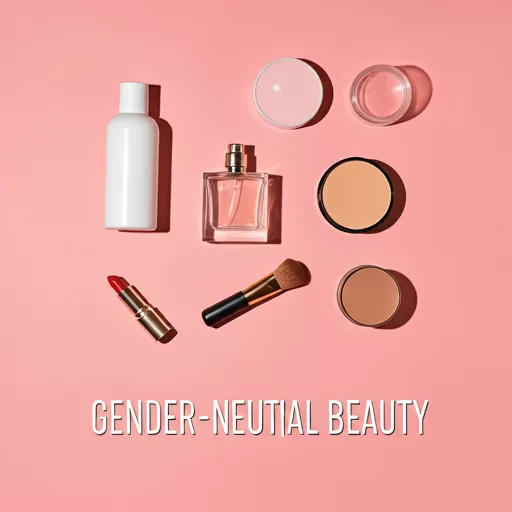Gender-Neutral Beauty: A Revolution in Skincare
Gender-Neutral Beauty: The beauty industry has undergone a seismic shift, with gender-neutral beauty at the forefront of this evolution. Moving beyond traditional gender norms, brands are embracing inclusivity by offering skincare solutions for everyone, regardless of gender identity. From unisex branding to simplified routines, this movement is reshaping how we think about beauty.

NIVEA Rich Nourishing Body Lotion (400ml), NIVEA Moisturiser for Dry Skin Made with Deep Moisture Serum, Natural Almond Oil, and Vitamin E, Smooth Skin…
Why Gender-Neutral Beauty Matters
In a world striving for equality and inclusivity, gender-neutral beauty reflects broader societal changes. Skincare isn’t about adhering to traditional beauty standards; it’s about health, self-expression, and individuality. As consumers demand transparency and equality, brands are redefining beauty as a universal experience.
Unisex Branding: Breaking Down Barriers
Inclusive Packaging
Unisex branding starts with packaging. Gone are the days of pink for women and blue for men. Instead, neutral tones, minimalist designs, and clear messaging dominate the shelves. These design choices signal that skincare belongs to everyone, breaking down stereotypes.
Marketing to Everyone
Traditional advertising often targeted specific genders, creating exclusionary campaigns. Unisex branding takes a different approach, celebrating diversity. Marketing now showcases individuals of all genders, demonstrating that skincare is a shared experience.
Examples of Successful Unisex Brands
Leading the charge are brands like The Ordinary, Aesop, and CeraVe. These companies emphasize effectiveness and simplicity, ensuring their products appeal to all. Their success highlights the growing demand for inclusivity in beauty.
The rise of gender-neutral skincare and beauty products is also fueled by influential celebrities and emerging market trends. Take Harry Styles, for example, whose launch of the Pleasing brand has significantly increased interest in men’s grooming and make-up. This reflects a broader cultural shift towards gender fluidity in beauty.
Consumer insights reveal that men’s interest in beauty products has grown, even as female interest has slightly declined. On social media, the #mensskincare hashtag has gained traction, evidencing this trend. Over 56% of men now have a skincare regime, signaling a changing landscape.
Brands are adapting with open, gender-neutral marketing strategies. Aesop’s global success with its unisex approach to fragrance and skincare exemplifies this movement. Meanwhile, campaigns like Fenty Skin’s The New Culture of Skincare, featuring A$AP Rocky and Lil Nas X, further illustrate this inclusive direction.
Celebrities are also making their mark. Brad Pitt recently launched Le Domaine, a genderless skincare line, adding to the growing portfolio of inclusive products. These developments showcase the diverse and collaborative efforts shaping the future of beauty.
Evolving world of beauty
In the evolving world of beauty, many brands are stepping up to support the LGBTQIA+ community and other marginalized groups. This transformation is visible in a variety of impactful ways:
1. Inclusive Product Lines
Brands are increasingly launching gender-neutral products that defy traditional beauty norms. These products cater to all individuals, regardless of gender identity, promoting self-expression and acceptance.
2. Foundational Values of Acceptance
Some brands are founded on principles of inclusivity and diversity. For instance, companies led by members of the LGBTQIA+ community often draw from personal experiences to establish a culture of acceptance, offering not just products but a safe space for exploration.
3. Safe Spaces for Exploration
Beauty brands are creating environments where marginalized individuals can experiment with their look without fear of judgment. Initiatives often include hosting events or workshops that are inclusive and welcoming to people of all identities and abilities.
4. Ethical and Inclusive Practices
The commitment to being ethical extends beyond just production. Many brands ensure their products are vegan and cruelty-free, showing respect for all living things, and aligning with the values of many within the LGBTQIA+ community.
5. Community and Charity Support
Numerous beauty companies actively donate a portion of their profits to LGBTQIA+ charities and supportive community centers. This not only gives back to the community but also ensures continued support for vital resources and safe spaces for individuals.
6. Breaking Stereotypes and Visibility
By featuring diverse models, including those from various ethnicities, gender identities, and sexual orientations, brands are breaking traditional beauty stereotypes. This visibility fosters a sense of belonging and representation that is crucial for empowering marginalized groups.
Through these approaches, beauty brands are not just inclusively marketing their products but are also playing a significant part in fostering a culture of acceptance and visibility for all.
Beauty brands increasingly weave social justice and activism into their business models by prioritizing inclusivity and community engagement. These companies often offer sustainable, clean, and vegan products, ensuring their impact on the planet aligns with modern ethical values. Additionally, many brands dedicate efforts to outreach initiatives that aim to make beauty accessible to a broader audience.
One example is the focus on education and awareness. Brands may provide resources and content that highlight issues like inclusivity in beauty, social justice, and activism opportunities. By doing so, they empower consumers to make informed decisions and get involved in important causes.
Furthermore, some brands actively participate in campaigns that support marginalized communities. This can include partnerships with organizations that work on social justice issues or funding programs that amplify underrepresented voices. Their commitment is often reflected in various projects and partnerships that aim to create real change.
By visiting dedicated sections on a brand’s website, consumers can frequently find articles and resources about ongoing efforts towards inclusivity and activism. In this way, beauty brands not only sell products but also act as platforms for social change, demonstrating a commitment that goes beyond the business bottom line.
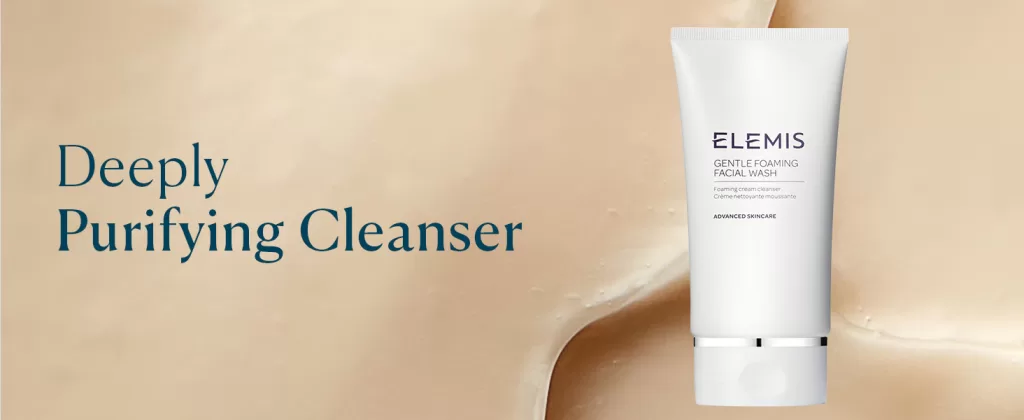
Simplified Routines: The Appeal of Minimalism
Why Simplicity Works
Complicated skincare routines can be overwhelming. Simplified routines cater to busy lifestyles and focus on essential steps. This minimalist approach resonates with both male and female audiences, offering an accessible entry point into skincare.
Building a Gender-Neutral Routine
- Cleanse: A gentle cleanser suited for all skin types is the foundation of any routine.
- Moisturize: Hydration is key, and unisex moisturizers cater to diverse needs.
- Protect: Sunscreen is a universal necessity, protecting against harmful UV rays.
Must-Have Products
Look for products with versatile formulas, such as:
- Gel-based cleansers
- Lightweight moisturizers
- Broad-spectrum sunscreens
How to Identify Sensitive Skin and Its Challenges
Identifying sensitive skin starts with observing how your skin reacts to different environmental and product exposures. If your skin quickly becomes red or feels irritated after using new skincare products or after exposure to wind or sun, you might have sensitive skin. Another clue is that your skin may sting, burn, or develop rashes easily.
Common Signs of Sensitive Skin:
- Redness: Frequent flushing or red patches, especially after cleansing or product application.
- Irritation and Stinging: Uncomfortable sensations when using even mild skincare products.
- Dryness: A tendency to become flaky or dehydrated, leading to more irritation.
- Breakouts: Prone to acne eruptions from non-comedogenic products.
Eczema, a condition characterized by inflamed, itchy, and often swollen skin, is also a common indicator. Sensitive skin often struggles to find balance due to weakened barriers that lead to moisture loss and greater irritation from environmental factors like pollution and weather.
Challenges for People with Sensitive Skin:
- Product Reaction: Many skincare products can exacerbate sensitivities due to harsh chemicals or fragrances.
- Environmental Sensitivity: Exposure to changes in weather, pollutants, and even water quality can provoke reactions.
- Limited Product Choices: Navigating the vast skincare market can be daunting, as labels aren’t always accurate in describing what is truly gentle.
- Frequent Irritation: Everyday activities, like shaving or using detergent-washed clothes, can result in persistent discomfort.
Managing sensitive skin requires attentive care and choosing the right products. Opting for skincare lines known for gentle formulations, such as those labeled hypoallergenic or specifically designed for sensitive skin, can help mitigate reactions and maintain skin health.

Understanding the Differences in Men’s and Women’s Skin
Men’s skin differs from women’s in several key ways, both structurally and functionally. For starters, men’s skin is generally thicker due to a higher concentration of collagen and elastin. This results in a firmer, more robust texture. Additionally, men’s sebaceous glands are more active, leading to increased oil production.
Signs of Oily Skin in Men:
Men with oily skin may notice:
- Larger Pores: Due to excess oil, pores may appear more prominent.
- Shiny Complexion: A persistent shine on the skin, particularly in the T-zone (forehead, nose, and chin).
- Frequent Breakouts: Increased oil can lead to clogged pores and more frequent acne breakouts.
Implications for Skincare Routines:
- Thicker Skin:
- Exfoliation: Since men’s skin is thicker, using a regular exfoliant can help remove dead skin cells more effectively. This aids in preventing clogged pores and promotes a smoother complexion.
- Oil Production:
- Cleansing: A daily facial cleanser that targets excess oil is crucial for men to maintain clear skin. Look for non-comedogenic formulations that won’t clog pores.
- Natural Ingredients for Oily Skin: Despite the increased oil production, the right natural skincare ingredients can help balance and control oil levels. Consider incorporating:
- Tea tree oil and witch hazel for their astringent properties.
- Activated charcoal and dead sea mud to draw out impurities.
- Apple cider vinegar as a natural toner to help regulate pH levels.
- Tailored Products:
- Moisturizers: Despite producing more oil, men’s skin still needs hydration. Opt for lightweight, oil-free moisturizers that provide moisture without greasiness.
- Ingredients like hyaluronic acid and beta hydroxy acid can offer hydration without excess oiliness.
- Alpha hydroxy acids can also be beneficial, helping to gently exfoliate and prevent pore congestion.
- Specific Concerns:
- Anti-aging and Spots: Focus on serums and treatments that address concerns like aging, blemishes, and dark spots. Ingredients such as retinol and antioxidants can be beneficial for both men and women.
Effective Ingredients for Oily Skin:
Consider incorporating these ingredients into your skincare routine:
- Alpha Hydroxy Acids (AHAs): Helps in controlling oil production and exfoliating the skin.
- Benzoyl Peroxide: Targets acne and reduces oil.
- Hyaluronic Acid: Provides hydration without adding extra oil.
- Beta Hydroxy Acid (BHA): Penetrates the pores to clear blockages.
- Activated Charcoal: Draws out impurities and excess oil.
- Tea Tree Oil & Witch Hazel: Natural astringents that help reduce oiliness and soothe the skin.
By understanding the specific needs of men’s skin and utilizing the right products and ingredients, managing oily skin becomes a straightforward task, ensuring a healthy, balanced complexion.
Addressing Changes in Aging Skin
As we age, both men and women experience changes in their skin, such as a loss of elasticity and the emergence of wrinkles and fine lines. While these are natural signs of aging, many seek to minimize their appearance.
Effective Anti-Aging Ingredients:
- Retinol: Known for its ability to improve skin texture, reduce wrinkles, and prevent new lines from forming, retinol is a go-to solution.
- Sea Buckthorn Oil: Offers nourishing properties that help rejuvenate aging skin.
- Vitamin E: Acts as a potent antioxidant, protecting the skin from free radical damage.
- Coffee Oil: Helps stimulate collagen production for firmer skin.
- Pomegranate: Rich in antioxidants, it supports skin regeneration.
- Hyaluronic Acid: Provides intense hydration, plumping the skin and reducing the visibility of fine lines.
- Lactic Acid: Gently exfoliates, promoting a brighter, smoother complexion.
- Green Tea: Its anti-inflammatory properties soothe aging skin and reduce signs of stress.
By integrating these ingredients into your skincare routine, you can effectively address the changes that come with aging. Whether you’re dealing with thicker skin or seeking to combat the signs of time, understanding these differences and solutions ensures healthier, more resilient skin.
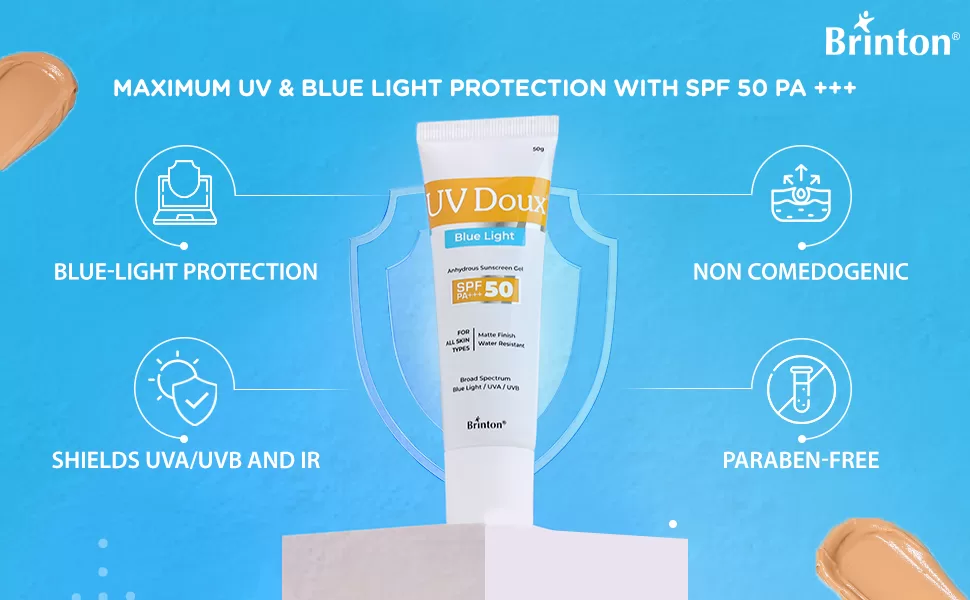
Brinton UV Doux Sunscreen Gel SPF 50 PA+++
Understanding Acne-Prone Skin: Key Characteristics
Acne-prone skin can manifest in various ways, but certain characteristics are common:
- Frequent Breakouts: This skin type is characterized by persistent blemishes, including pimples, blackheads, and whiteheads.
- Clogged Pores: Individuals often experience more blocked pores, leading to an uneven texture.
- Sensitivity: Acne-prone skin can easily react to certain products, environmental conditions, or hormonal changes, resulting in inflammation.
- Oiliness: While often associated with oily skin, acne can also affect those with dry skin. However, excessive oil production frequently accompanies breakouts.
- Fluctuating Skin Conditions: The condition of the skin may change, becoming oilier at times or, conversely, feeling tight and dry, especially when certain treatments are used.
Managing Acne-Prone Skin
In terms of skincare, some natural ingredients can offer relief. Witch hazel is a popular choice known for its ability to reduce oil and minimize breakouts. However, be cautious with products like coconut oil, which may exacerbate acne symptoms.
For anyone dealing with acne-prone skin, understanding these characteristics can guide effective skincare choices and improve overall skin health.
Understanding Combination Skin: Characteristics and Challenges
Combination skin is marked by its dual nature: a mix of dry and oily areas on the face. Typically, you might find excess oil on your T-zone—the forehead, nose, and chin—while your cheeks remain dry or even flaky.
Key Features of Combination Skin
- Oily T-Zone: This area is prone to shine, enlarged pores, and occasional breakouts.
- Dry Cheeks: You might experience tightness or even some flakiness in this region.
- Varied Needs: Each area requires targeted care, making it a bit tricky to balance.
Challenges of Managing Combination Skin
- Product Balance: Selecting skincare that neither exacerbates dryness nor heightens oiliness is crucial, yet challenging.
- Potential for Clogged Pores: Oilier zones may experience frequent pore congestion, leading to blackheads or acne if not addressed properly.
- Seasonal Sensitivity: Weather changes can swing your skin’s balance, requiring adjustments to your routine.
Skincare Tips for Combination Skin
- Gentle Cleansers: Opt for products that cleanse without stripping moisture, like gel or foam-based options.
- Targeted Moisturization: Consider using a light, non-comedogenic moisturizer for oilier areas, and a rich cream for drier patches.
- Regular Exfoliation: A gentle exfoliant can help keep pores clear, but avoid over-exfoliating the dry zones.
By understanding and addressing these characteristics, you can develop a skincare routine that tackles the unique challenges of combination skin effectively.
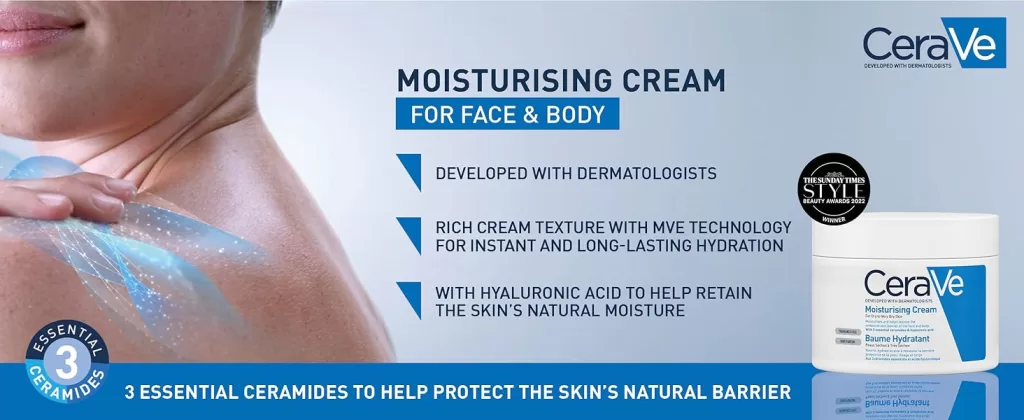
Understanding Dry Skin: Definition and Associated Issues
Dry skin is characterized by a lack of moisture, leading to a tight and uncomfortable sensation. Those with dry skin often experience flakiness and increased sensitivity, which can exacerbate the condition.
Key Characteristics of Dry Skin:
- Tightness: Often feels constricted and lacking in suppleness.
- Irritation: Easily becomes red and inflamed when exposed to environmental factors or harsh products.
- Flakiness: Dead skin cells accumulate, creating a rough texture.
Issues Linked to Dry Skin:
- Dull Complexion: The lack of natural oils can make the skin appear lackluster and tired.
- Reduced Elasticity: Without adequate moisture, skin loses its bounce, leading to sagging and fine lines.
- Increased Wrinkling: Dry skin is more prone to developing wrinkles and fine lines early, due to its inability to retain elasticity.
Sensitive skin commonly overlaps with dry skin, making it reactive to environmental stressors. Managing dry skin requires diligent care with moisturizing products and avoiding irritating ingredients.
What Are the Characteristics of Average Skin?
Average skin is the type many dream of—neither too dry nor excessively oily. Unlike combination skin, which may have disparate oily and dry areas, average skin typically maintains a consistent texture across the face. You won’t find yourself frequently battling issues like excessive redness or over-sensitivity.
Traits of Average Skin:
- Balance: Shows a harmonious balance without the extremes of oiliness or dryness.
- Texture: Generally smooth, with a subtle, natural glow.
- Minimal Concerns: Lack of significant issues like persistent oiliness or recurring dry patches.
Keeping average skin in its prime means maintaining its natural equilibrium. Gentle, natural ingredients work wonders:
- Cleansing: Use of mild agents such as organic rosewater, known for soothing properties.
- Moisturizing: Lightweight options like coconut oil can provide necessary hydration without overloading the skin.
Natural Skin Care Ingredients
Incorporate these ingredients to support the health and glow of average skin:
- Zinc Oxide: Offers protection and reduces inflammation.
- Jojoba Oil: Balances sebum production and moisturizes effectively.
- Aloe Vera: Provides soothing and hydrating benefits.
- Squalane: Mimics natural skin oils for a lightweight, non-greasy experience.
Understanding your skin type helps tailor your skincare routine, ensuring your skin remains at its best—effortlessly balanced and beautifully radiant.
The Rise of Gender-Neutral Skincare Products
Ingredients That Matter
Gender-neutral products prioritize effective, skin-friendly ingredients. Hyaluronic acid, niacinamide, and vitamin C are staples that work across the board.
The Role of Indian Sandalwood in Future Gender-Neutral Skincare and Beauty
Indian sandalwood is poised to become a cornerstone in the evolution of gender-neutral skincare and beauty products. As the industry shifts towards natural ingredients, sandalwood emerges as a versatile option suitable for various formulations. Here’s why:
- Universal Appeal: Its subtle, woody fragrance appeals to all genders, breaking free from traditional scent stereotypes.
- Benefits for All Skin Types: Indian sandalwood is renowned for its soothing and anti-inflammatory properties, making it suitable for diverse skin profiles—from oily to sensitive. If you find your skin gets easily irritated or red, you might be dealing with sensitive skin. This can make choosing the right skincare products a bit challenging. Fortunately, several natural ingredients offer gentle solutions.
Key Ingredients for Sensitive Skin
- Colloidal Oatmeal: Known for its calming and moisturizing effects, colloidal oatmeal is a top choice for sensitive skin as it minimizes irritation and allergic reactions.
- Aloe Vera: This natural healer soothes the skin while providing essential hydration, reducing redness and inflammation.
- Chamomile: With its anti-inflammatory properties, chamomile gently calms irritated skin.
- Shea Butter: Packed with vitamins and fatty acids, shea butter nourishes and hydrates without clogging pores.
- Squalane: Mimicking the skin’s natural oils, squalane offers lightweight moisture and balances sensitive skin.
- Olive Oil: Rich in antioxidants, olive oil locks in moisture and helps repair the skin barrier.
- Seaweed: Loaded with vitamins and minerals, seaweed detoxifies and soothes sensitive skin.
- Argan Oil: This nutrient-rich oil hydrates and protects the skin, reducing redness and irritation.
- By integrating these natural ingredients into your skincare routine, you can nurture sensitive skin without worry. Whether you prefer the classic touch of Indian sandalwood or the gentle embrace of chamomile, nature provides an array of solutions tailored to your skin’s unique needs.
- Ethical and Sustainable: With increasing consumer awareness around sustainability, Indian sandalwood’s responsible sourcing can enhance a brand’s ethical stance.
- Versatility in Formulation: Whether in creams, serums, or masks, sandalwood can be seamlessly integrated, offering a natural boost to product effectiveness.
In summary, Indian sandalwood’s adaptability, coupled with its eco-friendly credentials, ensures it plays a pivotal role in the gender-neutral beauty space, meeting the demands of a conscientious and diverse consumer base.

What Are the Benefits of Indian Sandalwood in Skincare and Beauty Products?
Indian sandalwood is a powerhouse ingredient in the realm of skincare and beauty, revered for its natural and multi-functional properties. Widely used for centuries, it offers an array of benefits that modern science continues to validate.
Anti-Aging and Skin Repair
- Reduces Signs of Aging: Indian sandalwood is known to combat the appearance of fine lines and wrinkles. By repairing skin damage and reducing inflammation, it helps maintain a youthful look.
- Skin Regeneration: It aids in restoring skin vitality, addressing damage caused by environmental stressors such as UV and blue light.
Other Natural Ingredients for Aging Skin
While Indian sandalwood is an exceptional choice, there are several other natural ingredients that effectively support aging skin:
- Retinol: Renowned for its ability to improve skin elasticity and minimize wrinkles, retinol is a go-to ingredient for anti-aging.
- Sea Buckthorn Oil: Packed with antioxidants, this oil helps rejuvenate the skin, making it firmer and more resilient.
- Vitamin E: Known for its moisturizing and healing properties, vitamin E helps protect skin cells from damage.
- Coffee Oil: This ingredient enhances circulation and reduces puffiness, promoting a more youthful appearance.
- Pomegranate: Rich in antioxidants, pomegranate helps protect the skin from free radicals and improves overall skin texture.
- Hyaluronic Acid: A powerful hydrator, it retains moisture in the skin, keeping it plump and smooth.
- Lactic Acid: Known for its gentle exfoliating properties, lactic acid helps remove dead skin cells and promote cell turnover.
- Green Tea: Its anti-inflammatory properties and high concentration of antioxidants make green tea a staple in anti-aging skincare routines.
By incorporating these natural ingredients into your skincare regimen, you can effectively address the signs of aging and maintain a radiant, youthful complexion. Whether you choose Indian sandalwood or a combination of several ingredients, nature offers a wealth of options for nurturing your skin.
Protective Properties
- Antioxidant Defense: With its strong antioxidant properties, Indian sandalwood shields the skin from harmful pollutants and the effects of blue light exposure.
- Prevents Pigmentation: By targeting pigmentation issues, it helps even out skin tone and reduce discoloration.
Skin Brightening and Soothing
- Enhances Radiance: The ingredient is celebrated for brightening the skin, providing a natural glow that revitalizes dull complexions.
- Soothes Irritation: Its calming properties make it an excellent choice for skin prone to redness or irritation.
Acne Reduction
- Minimizes Acne Appearance: Indian sandalwood’s anti-inflammatory qualities help reduce the visibility of acne and prevent future breakouts.
For those prone to acne, regardless of skin type, incorporating natural ingredients into your skincare routine can be transformative. Consider these options:
- Witch Hazel: Known for its ability to dry out breakouts, witch hazel is a staple for many battling acne.
- Tea Tree Oil: With its natural antibacterial properties, tea tree oil is effective in reducing acne-causing bacteria.
- Green Tea: Rich in antioxidants, green tea can soothe inflammation and reduce sebum production.
- Salicylic Acid: Naturally derived from willow bark, it helps to exfoliate and unclog pores, preventing future breakouts.
- Jojoba Oil: This non-comedogenic oil mimics skin’s natural sebum, providing moisture without clogging pores.
- Echinacea: Known for its anti-inflammatory and antibacterial properties, echinacea can help soothe irritated skin.
- Sage and Rosemary Extracts: These extracts are known for their ability to reduce inflammation and combat bacteria, supporting overall skin health.
By combining these natural elements, you can tailor a skincare routine that addresses acne from multiple angles, ensuring clearer and healthier skin over time.
Incorporating Indian sandalwood into your skincare regimen can offer these remarkable benefits, helping you achieve healthier, more radiant skin.
Sustainable Practices
Eco-conscious consumers value sustainability. Gender-neutral beauty aligns with these values, using recyclable packaging and cruelty-free practices to appeal to a wider audience.
Affordability and Accessibility
Making skincare accessible is crucial. Affordable, high-quality products democratize beauty, ensuring everyone can participate in self-care. Many beauty brands are stepping up to this challenge by implementing inclusive initiatives that extend beyond just product offerings.
- Sustainable and Ethical Choices: Companies are increasingly offering products that are not only effective but also align with ethical values like sustainability and veganism. These choices reflect a commitment to reach diverse consumer needs and preferences.
- Outreach and Education: Brands are actively participating in campaigns and initiatives that promote inclusivity. By engaging in such efforts, they aim to break down barriers in the beauty industry, making it easier for everyone to access quality skincare.
- Resources for Empowerment: Educational resources, such as articles on inclusivity, social justice, and activism, are being made available on company websites. These resources empower consumers by providing knowledge and opportunities to get involved in broader community efforts.
This combination of affordable products, ethical practices, and educational outreach not only enhances accessibility but also fosters a more inclusive beauty community.
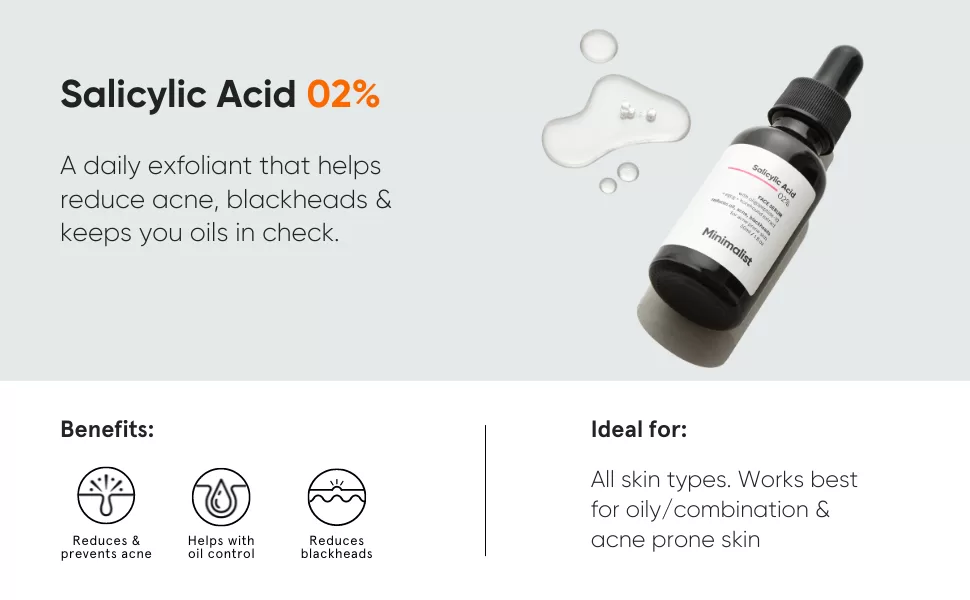
How Has the Beauty Industry Evolved in Inclusivity and Visibility for Marginalized Groups?
In recent years, the beauty industry has made significant strides in becoming more inclusive and visible to marginalized groups.
Expanding Product Ranges
Major brands now offer a broader spectrum of shades and formulations. This caters to diverse skin tones and types, no longer restricting beauty to a one-size-fits-all model. From deeper foundations to varied undertones, inclusivity in product ranges is evident.
Gender-Inclusive Marketing
Marketing strategies have shifted drastically. Campaigns now celebrate beauty beyond traditional gender norms, embracing people of all identities. The presence of non-binary and transgender individuals in ad campaigns signals this progress.
Embracing Authenticity and Representation
Representation matters. Brands are increasingly featuring models from underrepresented backgrounds, reflecting society’s diversity. This shift helps consumers see themselves in the products they use, fostering a sense of belonging.
Supporting Niche Brands
There’s been a rise in support for small, niche brands founded by individuals from marginalized backgrounds. These brands bring authentic perspectives, challenging industry standards and pushing for more personalized beauty solutions.
The beauty industry has a journey ahead. Yet, its current trajectory shows a promising commitment to acknowledging and celebrating diversity.
Best Natural Skincare Ingredients for Combination Skin
Navigating the challenges of combination skin can be tricky, as it involves managing both dry and oily areas. The key to success lies in selecting ingredients that address this duality without tipping the balance too far in either direction.
Key Ingredients to Consider
- Hyaluronic Acid
This powerhouse ingredient offers hydration without clogging pores, making it suitable for both dry and oily areas. It’s perfect for delivering moisture where needed without overwhelming oilier parts of the skin. - Willow Bark Extract
Known for its anti-inflammatory properties, willow bark helps to control excess oil without stripping the skin, maintaining harmony across different zones of the face. - Glycerin
Highly regarded for its moisturizing capabilities, glycerin attracts and locks in moisture, ensuring the drier patches of your skin remain hydrated and supple. - Rice Water
Rich in vitamins and minerals, rice water has been praised for its soothing effects. It can help balance out skin tone and provide gentle cleansing benefits. - Aloe Vera
Celebrated for its calming properties, aloe vera reduces irritation and provides lightweight hydration, making it a suitable choice for managing diverse skin types. - Jojoba Oil
This versatile oil mimics natural skin oils, helping to regulate sebum production. It’s particularly effective at moisturizing dry patches while balancing oily zones. - Zinc
Often used to combat acne, zinc regulates oil production and reduces inflammation, making it ideal for maintaining clarity and calmness in combination skin. - Cucumber Extract
Its cooling and hydrating properties refresh the skin, delivering essential nutrients without added heaviness, perfect for enhancing the overall complexion.
Conclusion
Choosing skincare that respects both the dry and oily components of combination skin is paramount. By incorporating these natural ingredients, you’ll nurture your skin with gentle, effective care that promotes balance and radiance.
The Best Natural Skincare Ingredients for Dry Skin
Dealing with dry skin can be challenging. If you often experience tightness, irritation, or flakes, you’re likely in need of the right ingredients to restore hydration and vitality to your skin. Choosing natural elements can make all the difference.
Key Hydrating Ingredients
- Argan Oil: Known for its lightweight texture, argan oil deeply moisturizes without leaving a greasy residue. It’s perfect for locking in moisture.
- Shea Butter: This rich, buttery ingredient is deeply nourishing and ideal for combating dryness, making it a staple in many moisturizing products.
- Olive Oil: Not just for cooking! Olive oil is packed with antioxidants and effectively soothes the skin while providing long-lasting hydration.
Additional Nourishing Ingredients
- Hyaluronic Acid: Renowned for its ability to retain moisture, this acid is crucial for maintaining skin elasticity and suppleness.
- Aloe Vera: With its calming properties, aloe vera helps soothe irritation while providing a moisture boost.
- Sea Buckthorn: This powerhouse ingredient is rich in vitamins and helps rejuvenate dry, tired skin.
- Squalane: Mimicking the skin’s natural oils, squalane offers deep hydration and improved skin texture without clogging pores.
- Glycerin: Acting as a moisture magnet, glycerin draws water into the skin, keeping it plump and hydrated.
- Honey: A natural humectant, honey retains and attracts moisture, providing a soothing layer of hydration.
- Alpha Hydroxy Acid (AHA): Particularly effective for exfoliating dead skin cells, AHAs reveal smoother, more hydrated skin beneath.
- Lactic Acid: This gentle exfoliant not only softens but also hydrates the skin, enhancing its natural glow.
Selecting skincare products infused with these natural ingredients can transform dry skin, leaving it soft, smooth, and more resilient. Always patch-test new products to ensure compatibility with your skin, especially if it tends to be sensitive.

What Natural Skincare Ingredients are Recommended for Average Skin?
If you’re blessed with average skin, you already enjoy a natural balance—neither too oily nor too dry. To maintain this harmony, gentle care with natural ingredients is key.
Firstly, consider organic rosewater. It’s renowned for its soothing anti-inflammatory properties and is packed with antioxidants, which help combat aging. Its gentle cleansing action makes it a perfect addition to your skincare routine, ensuring your skin remains refreshed without disrupting its natural equilibrium.
For moisturizing, coconut oil stands out. This versatile oil penetrates deeply, providing hydration without clogging pores. It’s especially beneficial for maintaining the skin’s natural moisture barrier.
Other beneficial ingredients include:
- Zinc oxide: Not only does it provide a protective barrier against harmful sun rays, but it also helps to keep the skin calm and balanced.
- Jojoba oil: Known for its similarity to the skin’s natural sebum, it moisturizes without leaving a greasy finish.
- Aloe vera: With its soothing and hydrating properties, aloe vera can help to keep the skin healthy and rejuvenated.
- Squalane: A lightweight moisturizer that mimics the skin’s natural oils, making it perfect for maintaining suppleness.
Incorporating these natural ingredients into your skincare regimen can help sustain your skin’s natural beauty while protecting it from daily environmental stressors.
How Natural Ingredients Are Shaping the Beauty Industry
The cosmetics and skincare industry is undergoing a transformative shift driven by increasing consumer demand for natural ingredients. One standout example is Indian sandalwood, revered for centuries and now celebrated in modern skincare routines for its multi-functional properties.
The Science Behind the Ingredient
Recent scientific studies underscore Indian sandalwood’s potential, particularly its ability to rejuvenate skin. It combats damage from UV and blue light exposure and addresses pigmentation issues with its powerful antioxidant properties. This makes it a go-to ingredient for those seeking protection against pollutants and environmental stressors.
Benefits that Drive Demand
- Anti-Aging Properties: Indian sandalwood has earned accolades for its potential to reduce fine lines and wrinkles.
- Acne and Skin Soothing: It’s lauded for minimizing acne appearances and calming irritated skin.
- Brightening Effect: Users appreciate its capability to enhance skin radiance.
When it comes to skincare, the term “natural” is commonly used, but its meaning can be quite misleading. In this context, “natural” generally implies that the product is made with ingredients derived from nature rather than synthetically manufactured substances. However, it’s important to note that many products labeled as natural may contain only a small percentage of these so-called natural ingredients.
Manufacturers often highlight one or two featured natural components, even if they appear far down on the ingredient list. This marketing tactic can lead consumers to perceive the product as more natural than it actually is. To truly understand how natural a skincare product is, it’s advisable to examine the first few ingredients listed. These top ingredients typically make up the majority of the product’s formulation and are a reliable indicator of its natural content.
Thus, when evaluating skincare products, focusing on the initial ingredients can provide a clearer picture of how genuinely natural the product really is. Remember, in a market saturated with claims, scrutinizing labels ensures transparency and empowers you to make informed choices.
Trends in Cosmetic Innovation
The growing preference for natural solutions has inspired a wave of innovation in the beauty industry. Emerging genderless beauty brands and well-established names like Herbivore Botanicals and Juice Beauty are capitalizing on this trend, formulating products that prioritize natural ingredients like Indian sandalwood.
Looking to the Future
As consumers become increasingly knowledgeable about what they apply to their skin, the role of natural ingredients in cosmetics will likely expand. Brands that emphasize sustainable sourcing and eco-friendly formulations are expected to be at the forefront of this industry evolution.
In conclusion, the demand for natural and environmentally conscious skincare is not just a trend—it’s reshaping the industry landscape and dictating the future of beauty innovations.
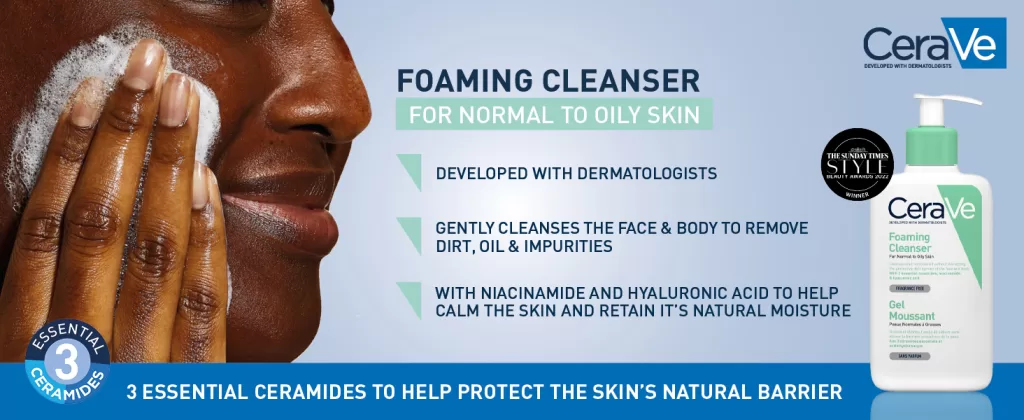
Why Consider Your Skin Type When Choosing Natural Skincare Ingredients?
When selecting skincare products, understanding your skin type is crucial. Whether you have oily, dry, sensitive, or combination skin, the products you choose can dramatically affect your complexion.
Tailored Solutions for Each Skin Type
- Oily Skin: Those with oily skin often benefit from ingredients like tea tree oil or salicylic acid, which help control sebum production. Using inappropriate products can clog pores and lead to breakouts.
- Dry Skin: For dry skin, look for hydrating ingredients like hyaluronic acid or shea butter. These provide essential moisture to avoid flaking and tightness.
- Sensitive Skin: If your skin is sensitive, opt for gentle ingredients such as aloe vera or chamomile. These soothe and protect against irritation.
Potential Consequences of Overlooking Skin Type
Ignoring your skin type can lead to adverse reactions. Using products meant for oily skin on naturally dry skin may strip away vital oils, leading to irritation. Similarly, using rich, dense products on oily skin can exacerbate shine and contribute to acne.
By aligning skincare ingredients with your specific skin type, you ensure that your skincare routine is both effective and harmonious with your skin’s natural needs.
How to Determine if a Skincare Product is Truly Natural
In the expanding world of natural skincare, determining authenticity can be challenging. Many products boast about being natural, yet often these claims don’t stand up to scrutiny. To really understand what you’re buying, focus on the ingredient list.
Start with the First Five Ingredients
The top five ingredients listed on a product usually constitute the majority of the formula. Pay close attention here, as they will give you the clearest insight into what you’re applying to your skin.
Check for Recognizable Ingredients
Look for ingredients that are both recognizable and derived from natural sources. If names sound more at home in a chemistry lab than in nature, the product may not be as natural as it claims.
Avoid Sneaky Marketing Terms
Terms like “natural” and “organic” can be misleading without proper certification or context. For example, a product may include one organic element but the rest of the ingredients might be synthetic.
Research Certifications
Certifications from reliable organizations provide assurance. They assess products against rigorous standards for natural content. Look for seals from credible entities like USDA Organic or others relevant to your location.
Be Wary of Greenwashing
Some brands utilize “greenwashing,” a tactic to make their products seem environmentally friendly without truly being so. Be skeptical of overly green branding paired with little evidence to support their claims.
Ultimately, becoming a savvy label reader is your best defense against misleading marketing. By educating yourself on ingredients and certifications, you’ll make more informed choices that align with your quest for genuine natural skincare.
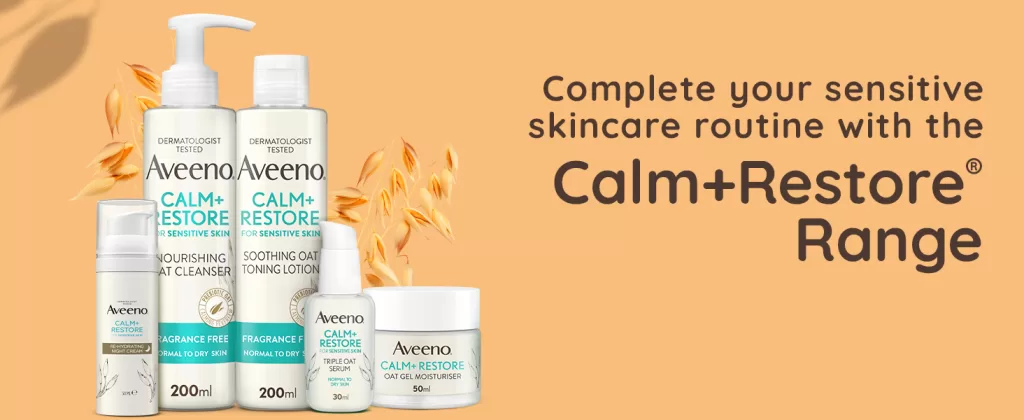
The Origins and Evolution of Gendered Skincare and Beauty Products
In the early days of television, a pivotal moment occurred that would shape the skincare and beauty industry for decades. The introduction of TV soap operas, primarily targeting housewives, marked the first time skincare products were distinctly marketed along gender lines. These early marketing efforts introduced fragranced soap bars designed explicitly for women, embedding the concept of gendered products into household routines.
A Century of Tradition
For nearly a hundred years, the notion of gender-specific skincare remained largely unchallenged. Products were developed with a clear divide: floral scents and luxurious creams for women, and rugged, utilitarian items for men. This separation was reinforced by advertising campaigns that played into traditional gender roles, cementing the idea in the public consciousness.
A Shift in Perception
Today, we’re witnessing a shift as a new, more inclusive generation enters the market, blurring the lines of traditional gender norms. With an increasing embrace of gender fluidity, these consumers are challenging the once rigid categorizations of beauty and skincare. They are demanding products that prioritize individual preference and skin needs over traditional gender associations, prompting brands to adapt their strategies and product lines to cater to this evolving landscape.
This ongoing transformation is paving the way for a more inclusive future in skincare and beauty, where personal expression takes precedence over outdated gender norms.
Industry Trends and Innovations
Technology in Skincare
AI-driven tools and personalized skincare apps cater to individual needs, transcending gender. This innovation bridges the gap, offering tailored solutions for all.
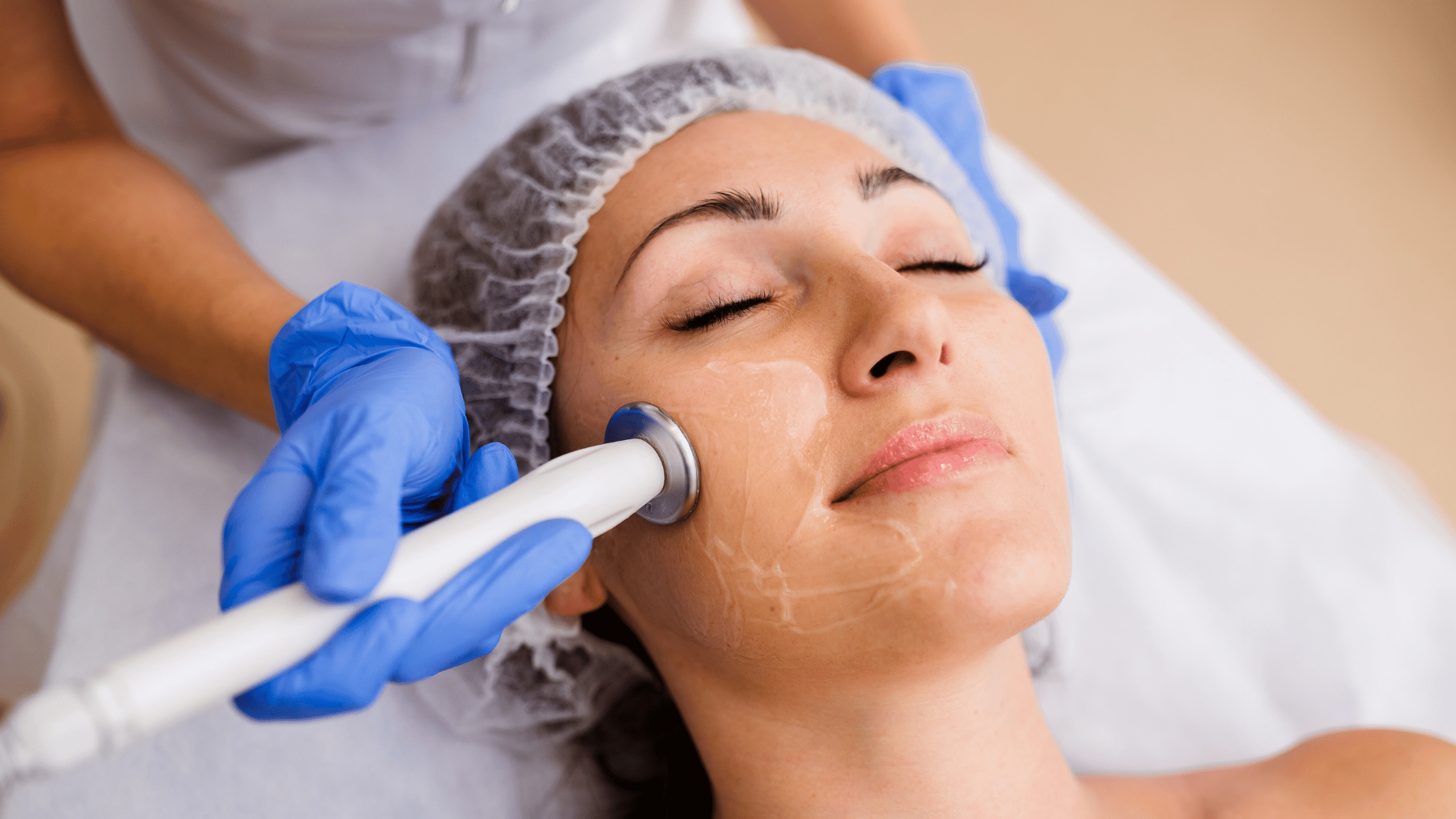
Latest Skincare Technologies Revolutionizing Beauty in 2024
Advanced Technology in Skincare, latest skincare technologies 2024 Revolutionizing Beauty In 2024, the skincare industry is witnessing a transformative wave with the integration of advanced technologies. These innovations are providing more personalized and effective solutions for various skin types and concerns. We delve into the cutting-edge technologies shaping the future of skincare and highlight some
Natural Ingredients Taking Center Stage
As the beauty industry embraces a gender-neutral approach, natural ingredients are becoming increasingly popular. Indian sandalwood, with its warm and creamy aroma reminiscent of wood, amber, and leather, stands out as a versatile option. Esteemed for its ability to repair skin damage, reduce inflammation, and protect against pollution, it appeals to all genders.
A recent consumer behavior study revealed that 70% of participants prefer natural cosmetics. This aligns with the projected expansion of the global natural skincare market, valued at USD 6.7 billion in 2021, expected to grow at a compound annual growth rate of 6.6% from 2022 to 2030. Indian sandalwood, with its antioxidant properties and capacity to brighten and soothe the skin, is perfectly positioned to meet this demand.
Retail Evolution
Brick-and-mortar stores are redesigning layouts to feature gender-neutral sections, fostering inclusivity. Online platforms also highlight unisex products, simplifying the shopping experience.
Cultural Shifts
Younger generations prioritize values over tradition. Gender-neutral beauty resonates with their desire for authenticity, equality, and simplicity. Gen Z is reshaping the landscape of makeup and beauty products by challenging traditional gender norms and advocating for inclusivity.
- Rejecting Gender-Specific Beauty: This generation discards the outdated notion that beauty is solely a female pursuit. Instead, they embrace makeup as an avenue for everyone, regardless of gender, to explore personal expression and creativity.
- Universal Self-Care and Expression: For Gen Z, cosmetics are not just about appearance; they are a form of self-care and a means of expressing individuality. This perspective transforms makeup from a gendered activity into a universal tool for self-expression.
By fostering a more inclusive view, Gen Z is pushing the beauty industry towards a future that celebrates diversity and personal authenticity.
Recent consumer trends reveal a growing interest in men’s grooming and skincare. Data from leading market research firm GWI shows that between 2018 and the second quarter of 2021, there was a noticeable 3% rise in men showing interest in beauty products. This is significant, especially when contrasted with a 5% drop in interest among female consumers during the same period.
Social media platforms further highlight this trend. The #mensskincare hashtag, for instance, has accumulated 330,000 posts by September 2022, demonstrating a vibrant community and increasing engagement in this niche.
Additionally, findings from the World Advertising Research Centre (WARC) indicate that over 56% of men currently follow a dedicated skincare routine. This shift underscores an evolving mindset towards personal grooming, reflecting a broader acceptance and enthusiasm for skincare practices among men.
Key Benefits of Gender-Neutral Beauty
- Inclusivity: Promotes equality in skincare.
- Simplicity: Reduces decision fatigue with minimalist options.
- Accessibility: Appeals to diverse audiences with versatile products.
- Sustainability: Aligns with eco-friendly values.
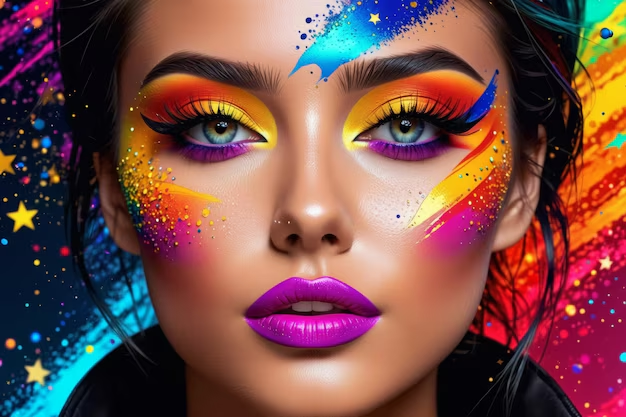
Digital Beauty: Exploring the Future of Beauty Tech
Digital Beauty: Revolutionizing the Future of Beauty The beauty industry has always been a space for innovation, but the rise of digital beauty is taking things to the next level. From virtual try-ons to AI-powered skincare analysis, digital beauty is transforming how consumers interact with products and services. This shift is empowering individuals to personalize…
FAQs
What is gender-neutral beauty?
Gender-neutral beauty refers to skincare and beauty products designed for all genders, focusing on inclusivity and simplicity.
Why are brands adopting unisex branding?
Unisex branding reflects societal shifts towards equality, offering products that transcend traditional gender norms.
Are gender-neutral products effective?
Yes, they prioritize universal skincare needs, using versatile and effective ingredients suitable for all skin types.
How do I start a gender-neutral skincare routine?
Focus on essential steps: cleansing, moisturizing, and sun protection. Choose products with straightforward formulas and universal benefits.
What brands offer gender-neutral beauty products?
Brands like The Ordinary, Aesop, and CeraVe lead the market with inclusive and minimalist skincare solutions.
Gender-neutral beauty isn’t just a trend; it’s a movement reshaping the industry. By embracing unisex branding and simplified routines, the future of skincare is inclusive, accessible, and empowering for all. Dive into this transformative era and redefine your beauty routine today.

Explore more articles like this @ Where And How Resources
If you found this article helpful, don’t forget to share it with your friends and followers!

